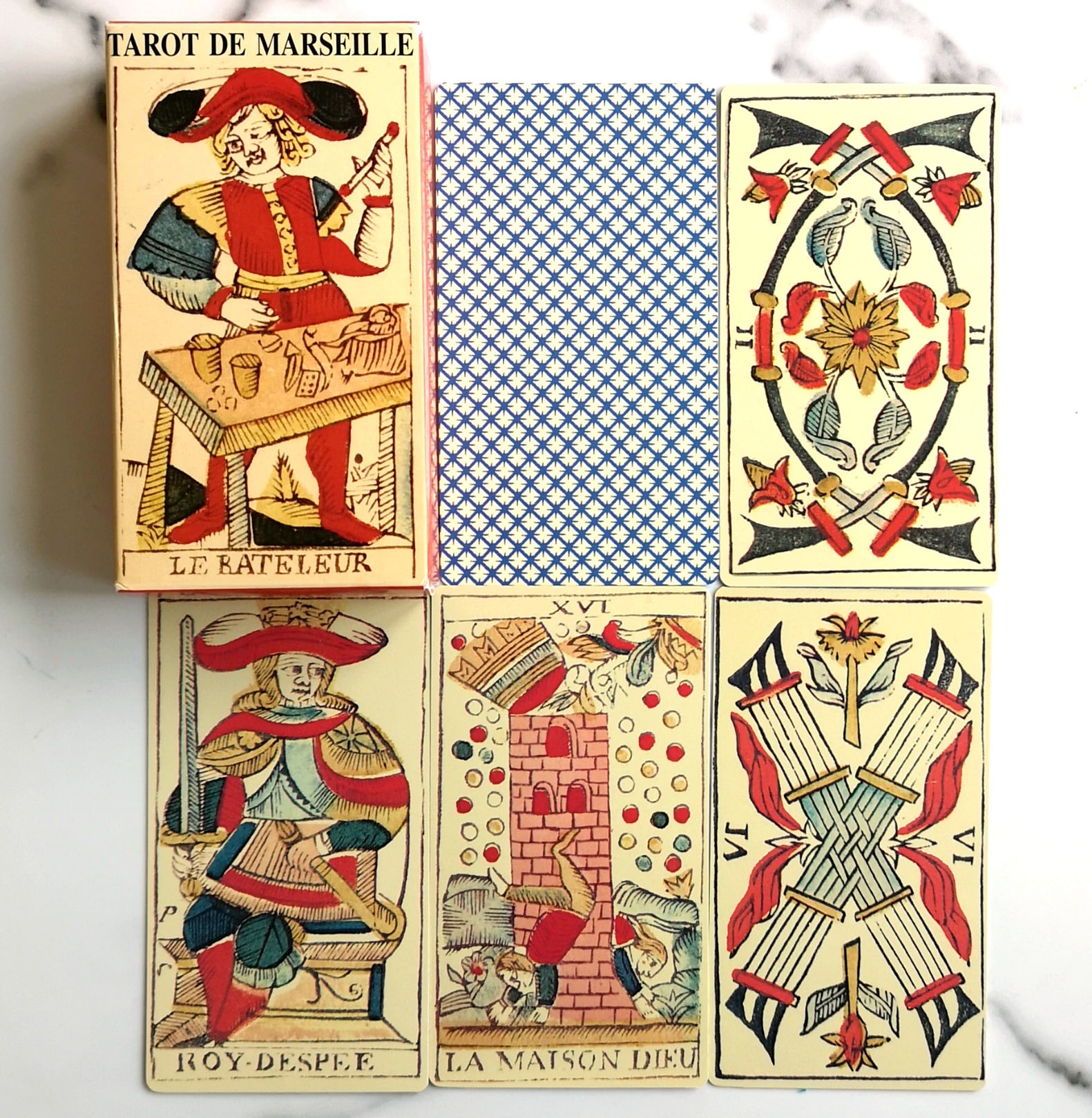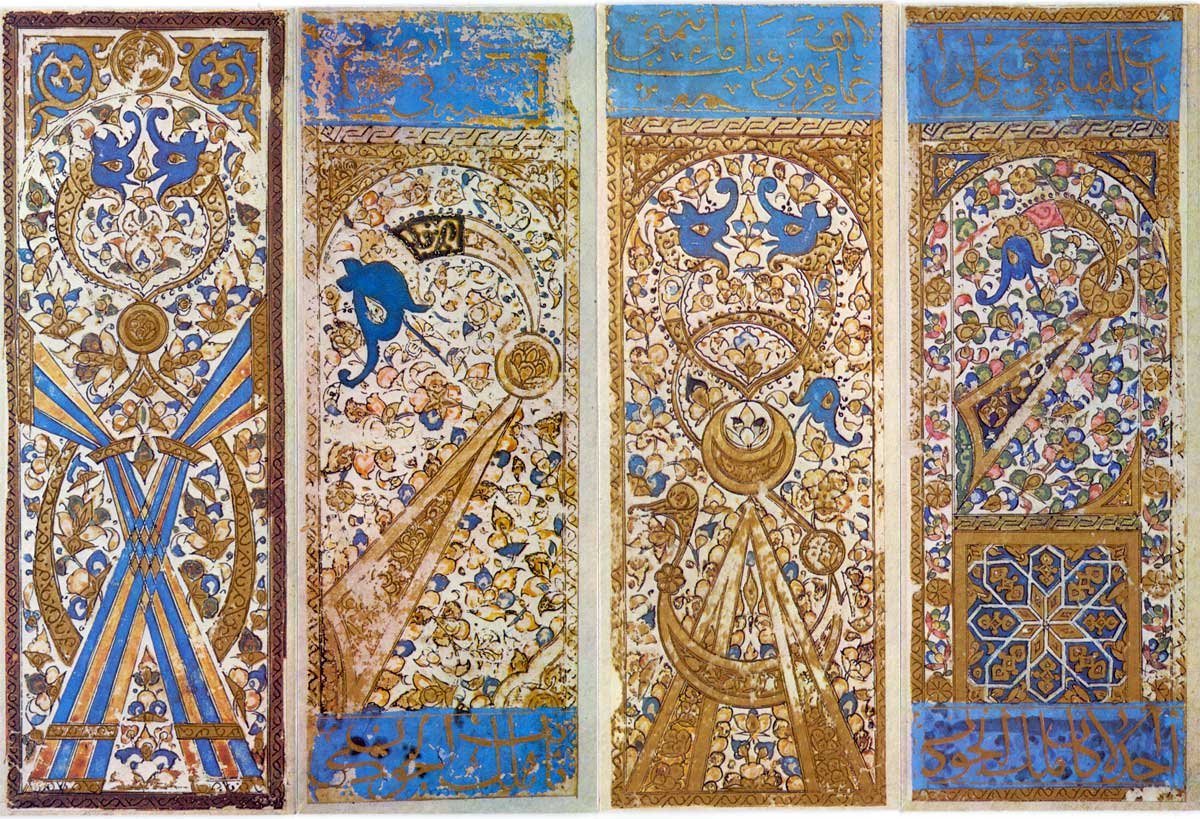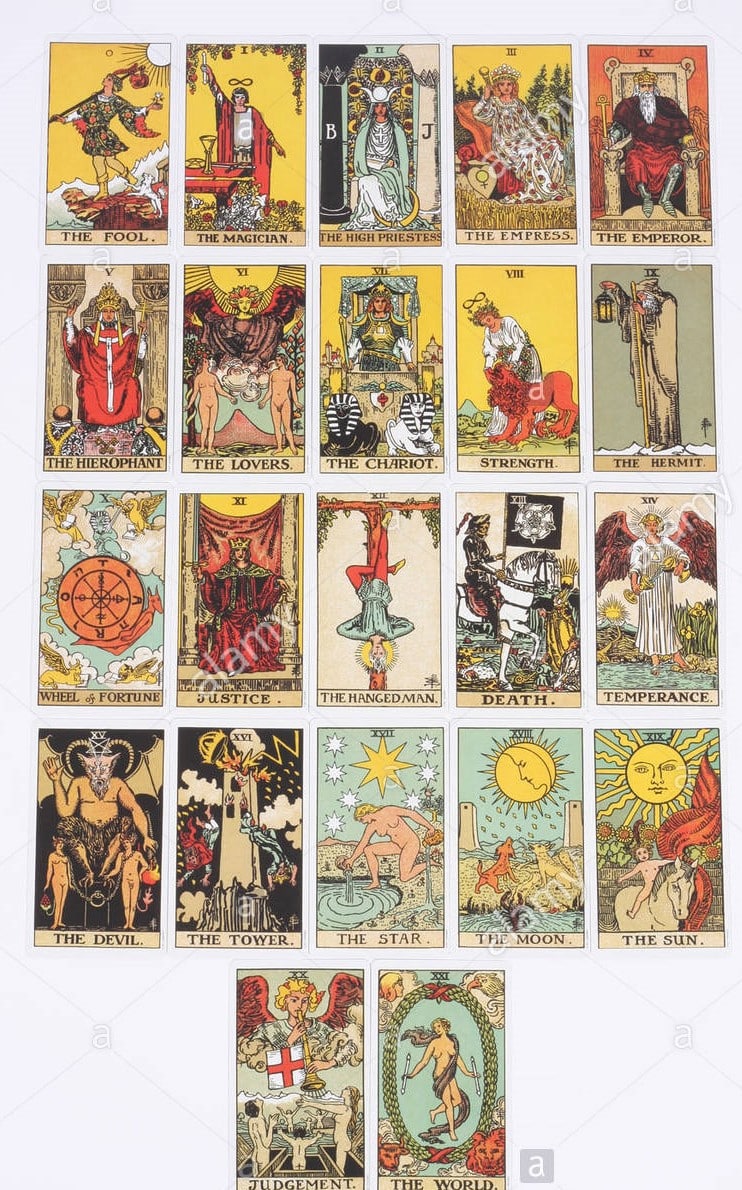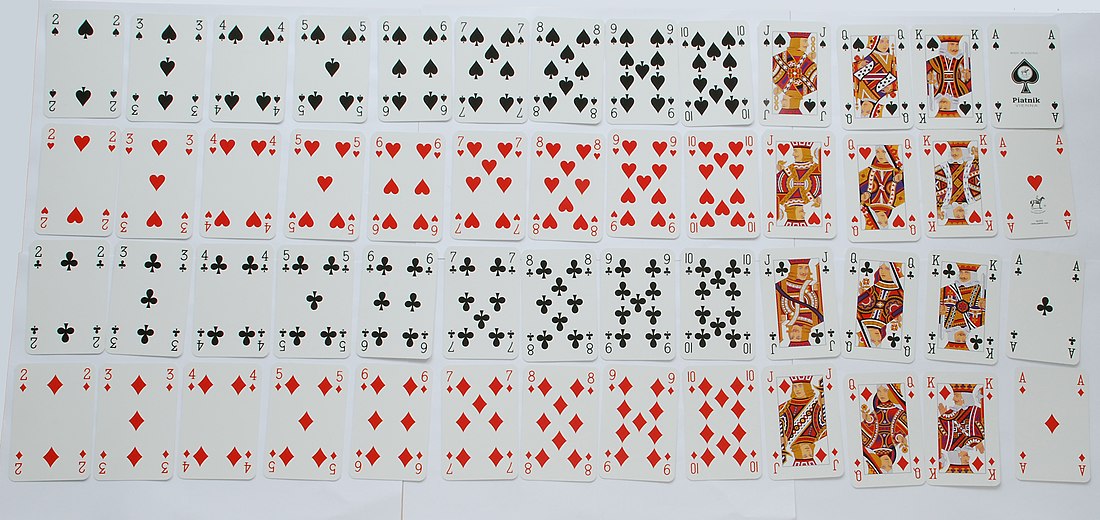Author: Erin Bee (Queen Bee Tarot)
In this page you’ll learn about the history of tarot. Discover how it first originated and how it came to be the huge industry we know today.
What is Tarot and How Did It Come To be?
To learn about the history of Tarot, we must also explore the history of playing cards, with which there are striking similarities that are not coincidental in nature.
Tarot History – An Overview
Tarot was not created or developed by one person or group of people- rather, its growth, creation, and popularity can be traced back to China, Egypt, Spain, France, Italy, and Germany. During the 14th and 15th centuries, Tarot evolved from regular playing cards, and only became a form of divination due to the cultural influence of “gypsies”.
Divination, or “fortune-telling”, had been around for thousands of years, but these nomadic peoples were the first to use cards for this purpose. Because divination is a “sin” in the Catholic church, at its roots, Tarot was an act of both political and religious rebellion. While the Catholic Church was taking over Europe and imposing monotheistic dogma, rules, and religious authority figures, Tarot was a way for the average person to both nourish and develop their own personal spiritual connection, instead of seeking the counsel of a priest or otherwise.
It was also a way of preserving prohibited information. Over time, Tarot became an esoteric tool through which anyone could develop their own personal spiritual connection, find answers, and seek guidance throughout their lives.
The Origin Of Playing Cards
Going back over 1000 years, the first playing cards in the world have their roots in China. The first cards were used for gambling, and for this reason, early cards were marked with different monetary values. The first games played with cards varied greatly.
From Asia, playing cards appeared next in Egypt, and it wasn’t until hundreds of years later that they were eventually brought to Europe during a time of invasion by Islamic forces. During the 1300s-1500s, the Mamluk Sultanate of Egypt enlarged its northern territories and boundaries, reaching Spain and Italy. As a result, they brought their cultural, artistic, and technical influence further north than it had ever been before, reviving previous influences imported by Romans during the Hellenistic period.
European culture had been enriched throughout many eras by the varied and changeable empires that held political power over the years. As a result of Hellenism, which was a period of thriving Greek cultural influence from the years 300-1000, many areas of Europe were interested in and appreciative of arts, music, and philosophy. During that time, Egyptian Serapian temples had been built in Italy and Asia minor, honoring the Isis religion.
When we look at the first playing cards made in Europe during the 1300s, we can see part of how this Egyptian influence was integrated. The overall structure of playing cards as we know them today, with four suits, Ace through 10, and court cards (such as Kings) find their roots in the Mamluk deck from Egypt.
However, because the Islamic religion prohibited pictures of icons, this deck had no images of people, but the court cards of each suit were named after kings and deputies. It is only in the subsequent versions of European decks of cards that we begin to see pictorial images of people and positions of status within society.
Tarot History – The Start Of Tarot Decks
It is important to note that the original Mamluk deck, despite not having pictures, did however include “fortunes” on many cards. These notations hinted at fate, both good and bad depending on the card, as well as love, death, birth, and much more. Beyond the 52-card structure, Europeans also copied the artistic embellishments and depictions of suits, which we can see especially in the Marseilles deck from France, which bears a striking resemblance to the art in the Mamluk deck from Egypt.
Historians are able to trace back the roots of playing cards as well as Tarot cards, and approximate their arrival in Europe based on records and notations citing their prohibition, indicating early popularity, as well as their incompatibility with “Christian” rules and regulations. Early versions of playing cards, especially the ones from the 14th century, reflected society, its people, and politics at the time.
There was no standardized art, only the common structure of four suits and inclusion of court cards, just like the playing cards we use today. The first Tarot decks appeared later, in France and Italy in the mid 1400s. The additional 22 cards that include the Fool, which make Tarot different from regular playing cards, were also not standardized at first. First known as Trionfi, and later as Tarocchi, credit for adding the Major Arcana goes to the Italians.
The characters within these extra cards were not only a reflection of society at the time, but also satire, as well as political commentary. In its early years, Tarot was an act of rebellion against the Catholic church, during a time of cultural assimilation and genocide. The cards, with only a basic common structure, were open to both interpretation and artistic creativity. They became a popular game, a form of expression, and a new medium through which artists could gain notoriety and fame. (By the way, we explain all about the Artist tarot card here).
Each country had adapted the Mamluk deck to suit its culture and its people. The original deck of playing cards from Egypt had four suits known as the coin, the sword, the cup, and the polo stick.
Because polo was not popular in Europe, that symbol became known as the baton. In Germany, titles for the suits included clovers and acorns, as the producers of playing cards at that time chose names and items familiar to its citizens.
The deck of playing cards that has become popular and world renowned in our common era is known as the “English” deck, but its connection to England did not happen until the 1700s. The four suits in Tarot remained named the way they had been since the 1400s, (cups, coins, batons, and swords) whereas playing cards, due to their continual evolution over the period of 300 years, ended up solidifying the suit names as hearts, spades, diamonds, and clubs.
These aforementioned names are an amalgamation of the multi cultural influences of the many European countries that had a hand in its original development and popularity.
Image credits: WPOC, PrettyCore, Wikipedia, Medium
The original playing cards from Egypt were used in a trick taking game, much like the modern games of hearts or spades. In these games, players would lay down a card from their hand, and whoever had the highest-ranking card won the round, or took the “trick”. The addition of the Major Arcana, also known as “trump” cards, were the highest-ranking cards of all. Within this extra section, cards were numbered from zero to 22. The Fool was the zero card and could be used as a wild card.
The rest had power according to their numbered rank. These Major Arcana, or “trump” cards, not only reflected positions and status within society at the time, but also drew associations with the human experience. It has been theorized that our lives, although drastically different in many ways, have common themes, chapters, and stages.
The Major Arcana aimed to illustrate this universal experience, dividing each stage into 22 parts, or more, depending on the artist.
Arcana
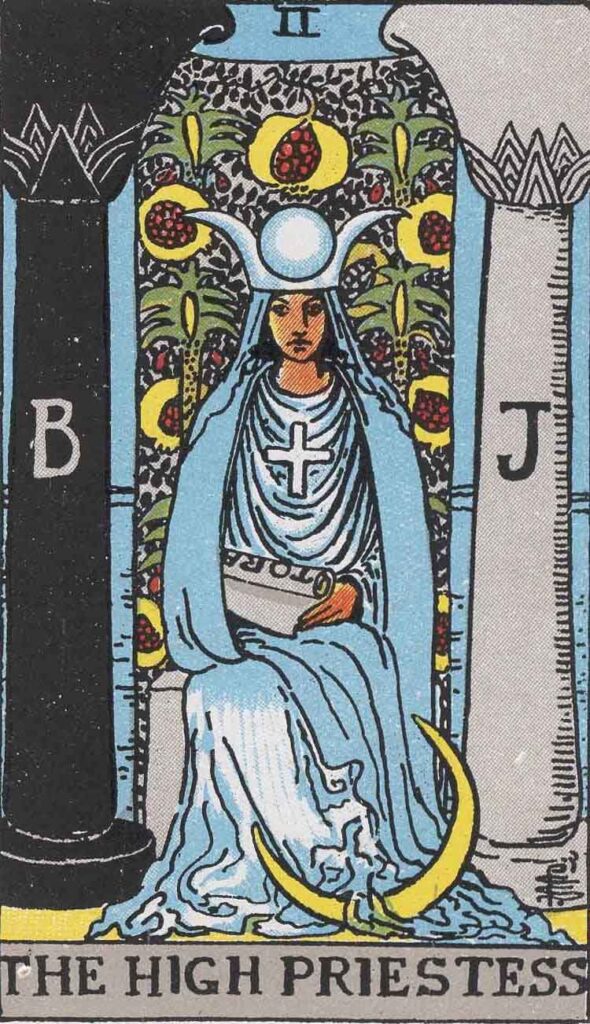
The word arcana means ancient mystery, and our first clue to the rebellious and mysterious nature of Tarot is a card from the Major Arcana that has become known today as the High Priestess.
Originally known as the Popess, this card was a representation of a significant position within dualistic religions that preceded modern day Christianity. When Tarot was created, it was becoming a time of male dominated politics and religion.
She was an ancient relic of a long-lost time period in which women were not only regarded as relative equals, but also had the privilege and the honor of holding status and/or influence, including positions such as priest or pope.
In ancient times, almost all political leaders had connections to oracles and sages who would advise them. Across the world, women were stationed in temples, acting as keepers of the flame, and serving as seers, possessing special gifts and natural talents for seeing the future. It was often women that were historically entrusted with divine or ancestral knowledge and traditions, and that continues to be a practice in cultures such as Judaism.
The original picture of the Popess was based on a woman who existed in real life, and her story dates back over 1000 years. In approximately the year 1260, a woman by the name of Guglielma of Bohemia was both spiritual and wealthy. She was held in such high regard, that when she died, the Guglielmite sect was established.
Most of her followers were burned at the stake in approximately the year 1300. Interestingly, she was a cousin of Visconte-Sforza, whose Tarot deck is one of the oldest European decks preserved. For her picture to become a standard card in the Tarot was an affirmation of spiritual and cultural survival, as well as the preservation of esoteric beliefs and history.
Christianity & Resistance
Starting in approximately the year 1000, Christianity had begun to sweep through Europe, and Catholicism was the only form.
Allegiance to the church, its beliefs, and its practices was demanded, and dissenters were declared evil and eliminated. Spread not by popularity, but instead by dominance, coercion, and political control, this “spiritual revolution” was in fact genocide.
The true revolution was in its resistance, not in its acceptance. Legions of armies were formed by the Catholic church, and on the pope’s orders they invaded and overtook almost all of Europe, between the years 476 and 1500, especially during the “Crusades” and “Reformation” periods. While proponents of Catholicism where insidiously capitalizing on this newfound power, persecuted peoples were fleeing the church and doing their best to preserve ancient history, culture, arts, and tradition.
It wasn’t until the year 1515, when the Protestant Church began to be established, that Catholicism found its first formidable foe. Until that time, Gnosticism, Paganism, and theologically dualistic religions were all but wiped off the map. All who dared to oppose the Catholic theocracy were killed or tortured. The preservation of information and the retention of spiritual, and intellectual connections became vitally important.
Paper
Paper had been invented in approximately the year 700 during the Tang dynasty in China. Through trade and political conquest, use of paper spread through Africa and Europe. However, it was not commonly known how to produce it. Therefore, only specially trained tradesmen were the ones that held the secrets behind its production.
It just so happened that the paper makers of this time were also running from the Catholic Church. These paper makers included the Knights Templars from the east, the Moors in Spain and Tuscany, the Albigensians, Bogomiles, and the Carthi. These persecuted peoples used specially designed symbols and watermarks to communicate with each other and established an underground network of sorts.
While playing cards grew in popularity, their production and use took many different forms, depending on who made them, and what they were intended to be used for. Unfortunately, not only did paper deteriorate easily with regular use, additionally, only those with the financial means could afford to purchase these luxury items.
Therefore, the only surviving cards we have from this period are the ones that were made of more durable material than paper (such as silver or wood), or those that were specially commissioned for members of elite classes, and preserved due to their lack of handling and use.
Antique Cards
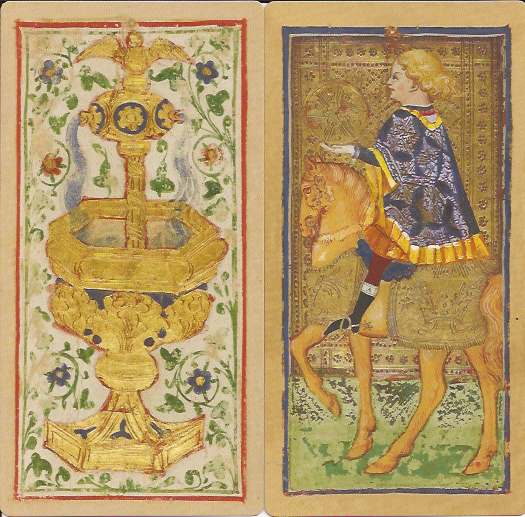
Of these remaining cards of antiquity, the most famous is the Visconte-Sforza from Italy. This deck is almost complete, and with it, a historical reference of the trouble its owner got into for possessing it and using it.
Interestingly, despite its prohibition, in the mid 1500s, historical records indicate that Tarot cards were used during an important meeting by Pope Pius II and a few high-ranking Cardinals at the time. Although the Catholic Church forbade divination and all related things, they were guilty of using them, which was typical of the systemic hypocrisy within its ranks.
In fact, it was the inquisition that pursued Visconte-Sforza, and interrogated him due to his connection with the cards. Not only had he supposedly broken the law, but he was also accused of supporting the rebellion against the Catholic Church. Oracles had become outlaws, temples were being burned, and esoteric information as well as practices had to move “underground”. These underground networks even included DaVinci.
In the time that playing cards and Tarot card spread across Europe, many alterations were made to the characters found therein, and so the cards evolved over the years.
Often pictorial references to corruption within the church became forefront in the imagery and symbolism. One particular card illustrating such immorality depicts a priest accepting money from a “sinner” in exchange for “God’s forgiveness”, which was a common practice at the time. Although the Catholic Church had found great power during this period, the resistance was strong, and a counterculture in itself.
While the Tarocchi deck gained popularity in Italy, the Marseilles deck was popular in France, and the Karnὂffel deck was popular in Germany.
Each deck reflected the individuality and unique qualities of both the creator and the communities they lived in.
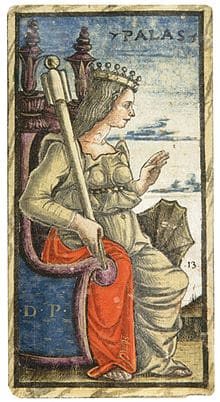
The Sola Busca deck, created in 1491, was the first deck to use Roman numerals for the Major Arcana cards, and to add identifying numbers to the minor cards. Previously, where earlier decks of playing cards and Tarot cards simply had, for example, seven cups in a card, the Sola Busca added the number 7 on the outer border of the card, making them easier to identify.
This was a useful advancement for all card games, allowing the player to fan their cards in one hand, seeing them all at the same time, and quickly being able to identify their value. Throughout this time period, Tarot cards were being used both as a game and as a tool of divination. The continually evolving pictures and designs used organically grew from game play, as well as evolving reflections of society.
As Tarot evolved in its early years, many of its original creators added Major Arcana cards that are no longer part of the deck. Some had names such as faith, love, hope, prudence, and other references to states of grace or ascension within the Catholic Church. There were a couple of crucial time periods during which Tarot was revived as a part of cultural renaissance.
Aside from their original creation in the 1400s, they also experienced a period of rebirth and renewal during the 1700s, as the Catholic Church lost its grip of power and control over Europe. During this time, the “new world” had been discovered in North America, and concepts of democracy as well as cultural appreciation were gaining popularity again. It was in this time of renewal that the Freemasons and the Order of the Golden Dawn were established.
Freemasons
Freemasons were originally established as a way of preserving the techniques of their trade. Known as master builders, these stonemasons proudly honored their roots and ancestors whose abilities and techniques can be traced back to the Levant region, as far as 100AD, if not earlier.
The Freemason society was a network of such tradesmen, who not only preserved the tools and techniques of their trade, but also a great deal of culture and heritage. From humble beginnings in the Middle Ages, lodges in Scotland were the first to become an official group in 1599. Their mission statement was not just limited to gathering around their ability to build, but also encompassed alchemy, astrology, and philosophy. In the early 1700s, this network grew in officiality and stature.
Order Of The Golden Dawn
Around the same time, the Order of the Golden Dawn formed. They were not a group of tradesmen; however, they had a similar mission statement of preserving arts, culture, and knowledge, as well as a focus on spiritual development and esoteric knowledge. They too traced their roots, information, and inspiration to ancient times. These two societies gained popularity during this time of cultural renaissance, when people were thirsty for meaning and enrichment.
In North America in the early 1900s, a man by the name of Arthur Waite, and a woman by the name of Pamela Colman Smith were members of the Order of the Golden Dawn. Together they created a “universal” Tarot deck in which they were able to convey and preserve both ancient knowledge and esoteric origins. They linked each of the 22 cards of the Major Arcana to the 22 letters of the Hebrew alphabet, and included Astrological associations.
Tarot History – The Rider-Waite-Smith Deck
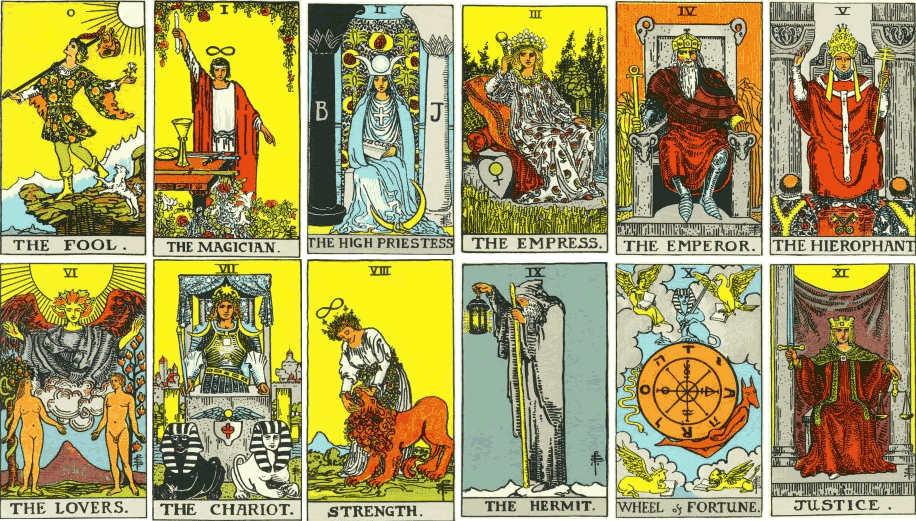
Although scholars continue to argue about the associations they drew to this very day, their work did much to standardize the Tarot, including solidifying the 78-card format. The Rider-Waite-Smith deck is now referred to as the “original” Tarot, and even though it is not truly the original, it is definitely the root and foundation from which all other modern Tarot decks made since were based on. Its images and meanings go beyond simple interpretation, and have both Astrological and Alchemical implications of power, knowledge, and divinity.
The deck and the rights for publishing were picked up by US Games in the 1970s, and was then reproduced and distributed en-masse. First known as the “Rider Waite” deck, named for the two men involved in the project (Rider was the publisher), it was only recently, when a “100-year anniversary” deck was published, that Pamela Colman Smith received her long-due credit.
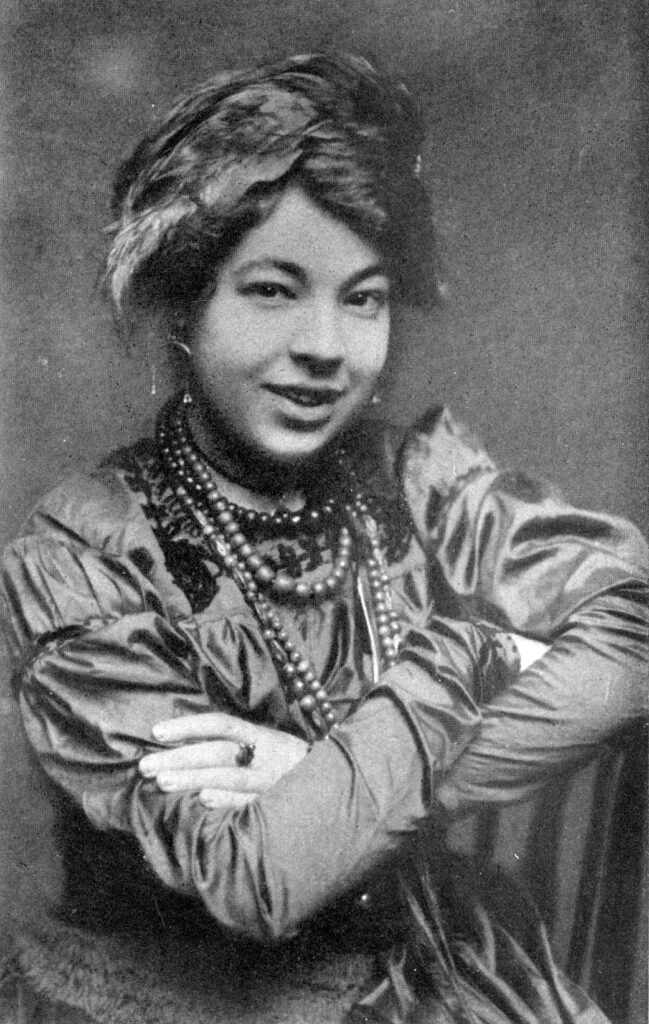
Pamela did all of the artwork, and she has an interesting story that began in London.
Her mother was Jamaican, and her father was British. She attended art school in New York in the mid 1870s, but left to become a travelling bohemian artist, and was a member of the suffragette movement.
A rebel at her core, she was a free spirit with a passion for art. She had a unique artistic style that was inspired by her heritage and her travels, and worked as an illustrator for Yeats and Bram Stoker, among others. It was William Yeats that introduced her to the Order of the Golden Dawn, and in 1909 Arthur Waite commissioned her to do the art for a new deck.
His goal was to have a picture on each card, which had not been done as of yet- except for the Sola Busca deck, created in Italy in the 1490s. She was encouraged to take inspiration from it, which she clearly did.
Visually, we can see striking similarities between her art and the images found in the Sola Busca deck, as well as the Mantegna deck- but she did everything in her own expressive style. What truly makes this deck unique was the associated instructions and interpretations for each card. She had her own unique ideas about how to read each card, and so did Arthur Waite.
They popularized the “Celtic Cross Spread”, and encouraged the reader to pay attention to the details in each picture- including colors, body language, and surroundings.
Tarot History – A Summary
The reasons for Tarot’s appeal and its rise in popularity are still true and relevant today. People are thirsty for knowledge, and people desire a personal connection with their higher power. In earlier generations, churches still held moral authority; however, that influence is waning. Now that organized religion has lost its stronghold, and more people than ever before identify as spiritual instead of religious,
Tarot has once again risen in both counterculture and within the core of society. Popularized by young people and modern formats such as TikTok and YouTube, Tarot has once again made its way to the forefront of culture, and our awareness, as a tool of empowerment, reflection, and divination. Anyone can pick up a deck of Tarot cards and have a meaningful experience.
This makes it accessible and personal, which will always have appeal. Additionally, there is an infinite amount to learn if you wish – and studying the art of divination with Tarot can be a life-long journey.
Frequently Asked Questions
Where can I find a copy of the Secrets of the Tarot: Origins, History, and Symbolism?
This popular (but sometimes hard to find) book about tarot can usually be found on Amazon, AbeBooks or Etsy. Its price varies according to which edition it is, condition, and whether hardback or paperback.
About The Author
Erin Bee is Queen Bee Tarot, and she has been reading Tarot cards, practicing divination, and studying Astrology for over 30 years. Possessing extensive knowledge and experience, she now shares her wisdom and gifts with clients all over the world.
Visit her website here: www.queenbeetarot.net
Find her on Facebook
Find her on Instagram
Find her on YouTube
Find her on Reddit
